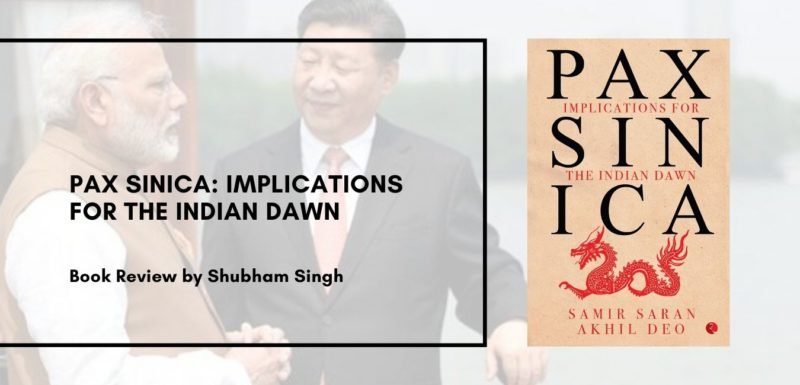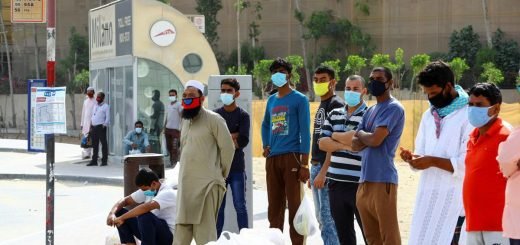Book Review: Pax Sinica: Implications for the Indian Dawn

In March 2018, China’s parliament abolished the presidential term limit, making Xi Jinping as President of China for the rest of the period (for life). It becomes important to know, what let this situation to happen and what would be the future implication of this bold decision, on Asia as well as on the whole world.
Samir Saran and Akhil Deo in the book, Pax Sinica: Implications for the Indian Dawn, have outlined a depth analysis of various questions that the present world is facing regarding this new shift. The rise of China and the implications of the new ‘Beijing System’ would definitely be going to impact the very neighbour, India and others also. What would India’s reaction against the Dragon’s rising speed, attaining more power and stability.
Book has been broadly divided into nine chapters, each inter-connected together. It talks about various stages of development, various factors and various implications of China’s growth story. Authors in the 9th chapter, titled ‘Xi Dreams’ (page number 120) has boldly quoted “XI Jinping as China’s most powerful leader since Mao”. This comparison has not erupted all of sudden but they have laid down the whole story behind this conclusion.
Since after Xi came to power, China started taking a deeper interest in Asian Infrastructure Investment Bank (AIIB) and New Development Bank (NDB) like Institution to pose direct challenges to the USA led Bretton Woods institutions like International Monetary Fund (IMF) and World Bank (WB). It also represents China’s capacity and inclination to create a new parallel institutional order and it is capable of exercising institutional statecraft to its advantage. China today is the world’s second-largest economy in the world just next to the USA.
The book mentions Xi as a transformer who is on way to become a statesman. He is following the path of Deng Xiaoping and is an important player behind the reduction of corruption from China. Further book tags the Hu Jintao-Wen Jiabo era (2002-2012) as a failure.
Read Book Review: US vs China… From Trade War to Reciprocal Deal
Xi appears to be stubbornly departing from Den Xiaoping’s maxim – ‘Observe calmly, secure one position, cope with the affairs calmly, hide our capacities and bide our time, be good at maintaining a low profile and claim leadership’. XI found himself as central of this effort, giving a new idea of thought ‘Xi Jinping’s thought on socialism with Chinese characteristic for the new age’.
Authors have talked about Xi Jinping’s thought for India. He connected that when the China-India relationship would develop and strengthen only then real ‘Asian Century’ would rightly emerge. China has even suggested that Modi would become India’s Nixon given his right-wing background. Xi also declared India as one of China’s most important partner in March 2013 on the sidelines of BRICS summit just after coming to power. India also remains the largest beneficiaries of the AIIB.
They have mentioned that ‘Asian Century‘ has been defined by the rise of China and to a lesser extent India’s economic growth. Both nations are facing similar issues. For India competition with China will not merely be geographical or economic but ultimately it is ideological.
Belt and Road Initiative (BRI) is an epic example of Xi’s vision for future, just announced after a year of his assuming the office. The project which evolved over sixty countries with a combination of the population of over four billion people. It also became a reason for India-China scuffle as it imposed challenges to India’s autonomy. Authors have cautioned that BRI projects are financially unstable and trade imbalance with Beijing is also too high.

Authors have fully devoted a chapter (The World is ‘Modi’fied) on Indian Prime Minister Narendra Modi’s approach towards the changes and challenges. Government of PM Modi which started from his much-weighted slogan ‘Saab K Saath, Saab Ka Vikas’ and his aspiration to make India, the world’s top economic power by 2050 amongst with USA and China. They have compared the PM Modi and President Jinping and taken out various similarities. They also compared former Prime Minister Dr Manmohan Singh with the term former Chinese President Hu Jintao and evaluated, where both of these lacked the race.
Authors have discussed India’s complicated relations with China when it comes to China refusing to support a UN resolution by India that would have declared the Pakistan-based Jaish-e-Mohammed (JEM) chief Masood Azhar an international terrorist. It also continues to not support India’s bid for the Nuclear Suppliers Group (NSG).
Today’s order is best characterized as an extension of ‘Atlantic System’ but the adoption and diffusion of new technologies in geopolitical interest of rising power have left the ‘Atlantic System’ incapable of managing the world order. ‘Democratic Capitalism’ appears to have lost its space even in countries that once evangelized it. Xi Jinping’s China is providing a model for strong states around the world and offers an alternative for social stability and economic growth.
State-controlled media has been one of the reasons for criticism of Xi which he uses as a primary tool for shaping international discourse on China. China’s closest partner, Russia has also been discussed by the authors. In September 2018, both the countries send a powerful signal about their strengthening partnership. Military of both countries gave a powerful presentation of a joint military exercise in Vostok.
Events like Doklam standoff represent the height of tension between India and China. New Delhi will also have to reimagine its relationship with China. It must recognise the long term political threat from China, prepared to respond to Beijing’s assertiveness in the medium term and embrace China economically, in the short term.
Authors can be seen over-optimistic regarding Xi Jinping, however, they have also cautioned Xi that without having a clear map for political succession, China dream cannot be fulfilled. They have neglected India’s strengthening position in East and South East Asia. What would be the implications of India not joining the Regional Comprehensive Economic Partnership (RCEP) on India-China future relations. Overall book is a good read. It takes out essential questions and tries to answer them in a very lucid way. However, these questions are needed to be rechecked again and again in different time and frame.



















